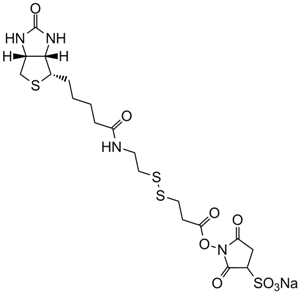Sulfo-NHS-SS-Biotin [325143-98-4]
Brand : APExBIO Technology
Request more information
Please log in to use this feature.
- Home
- Protein & Immunology
- Protein Labeling
- Biotinylation Reagents
- Amine Biotinylation Reagents
- Sulfo-NHS-SS-Biotin
Sulfo-NHS-SS-Biotin
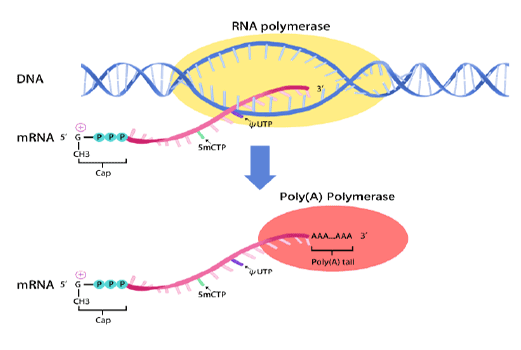
mRNA synthesis
In vitro transcription of capped mRNA with modified nucleotides and Poly(A) tail
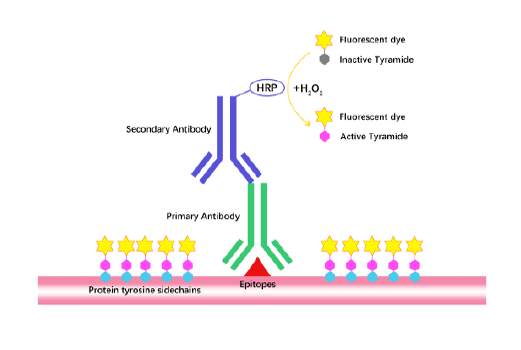
Tyramide Signal Amplification (TSA)
TSA (Tyramide Signal Amplification), used for signal amplification of ISH, IHC and IC etc.
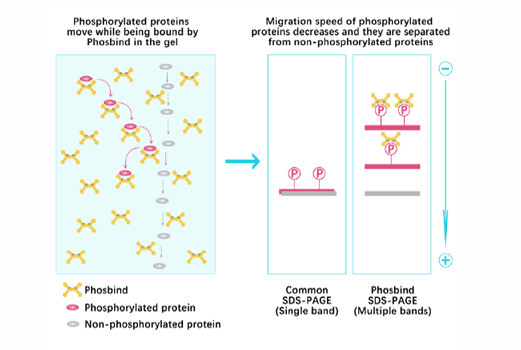
Phos Binding Reagent Acrylamide
Separation of phosphorylated and non-phosphorylated proteins without phospho-specific antibody
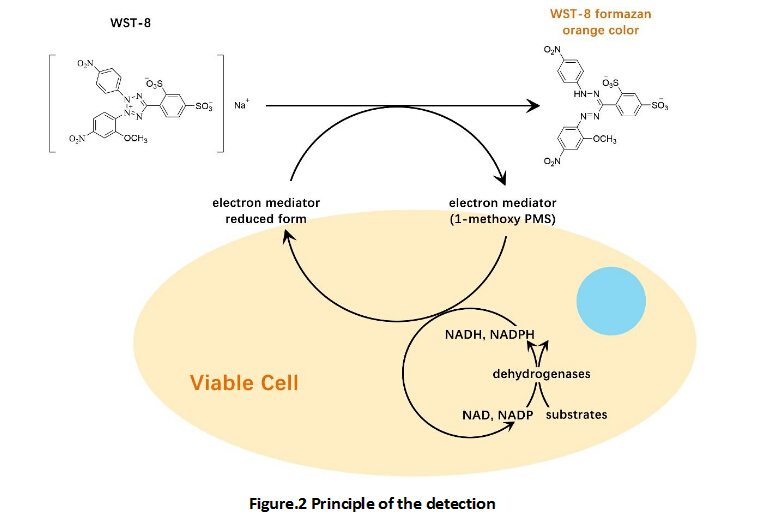
Cell Counting Kit-8 (CCK-8)
A convenient and sensitive way for cell proliferation assay and cytotoxicity assay
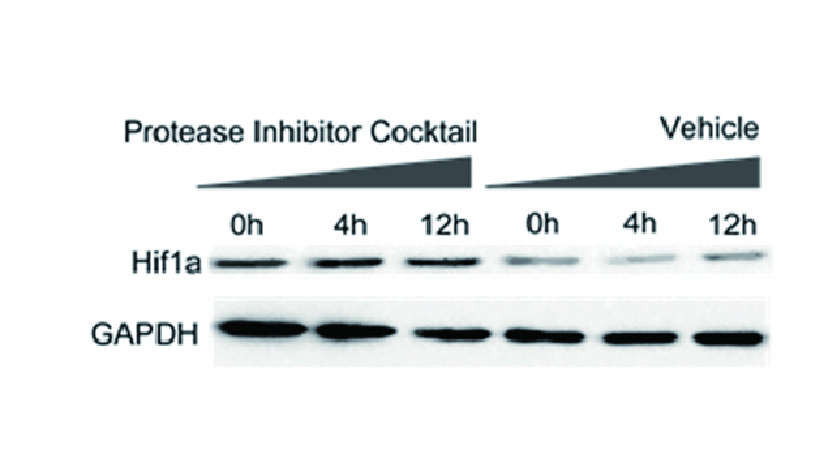
Inhibitor Cocktails
Protect the integrity of proteins from multiple proteases and phosphatases for different applications.
Background
Sulfo-NHS-SS-biotin(sulfosuccinimidyl-20(biotinamido)ethyl-1,3-dithiopropionate) is a long-chain cleavable amine-reactive biotinylation reagent. The presence of the negatively charged sulfonate group in the chemical structure of sulfo-NHS-SS-biotin makes it a water-soluble biotinylation reagent that can be directly added to aqueous reactions without prior dissolution of organic solvents. Although no prior dissolution is required, an aqueous stock solution of sulfo-NHS-SS-biotin must be prepared rapidly and used immediately in case of the occurrence of hydrolysis of the active ester. Sulfo-NHS-SS-biotin has been used to react with amine-containing proteins and other molecules forming a complex which further interacts with avidin or streptavidin probes and to purify targeted molecules using affinity chromatography on a column of immobilized avidin or streptavidin.
Reference
Bioconjugate Techniques , 2nd ed. By Greg T.Hermanson (Pierce Biotechnology, Thermo Fisher Scientific, Rockford, IL). Academic Press (an imprint of Elsevier): London, Amsterdam, Burlington, San Diego . 2008. ISBN 978-0-12-370501-3.
Product Citation
- 1. Ya-Juan Wang, Hailey Seibert, et al. "Pharmacological chaperones restore proteostasis of epilepsy-associated GABA." Pharmacol Res. 2024 Oct:208:107356 PMID: 39216838
- 2. Neuza Domingues , Steve Catarino, et al. "Connexin43 promotes exocytosis of damaged lysosomes through actin remodelling." EMBO J. 2024 Jul 23 PMID: 39044100
- 3. Fang Ye, Zhikang Yuan, et al. "Endocytic activation and exosomal secretion of matriptase stimulate the second wave of EGF signaling to promote skin and breast cancer invasion." Cell Rep. 2024 Apr 23;43(4):114002. PMID: 38547126
- 4. Tingting Wu, Lulu Wang, et al. "Regulatory T cell-derived exosome mediated macrophages polarization for osteogenic differentiation in fracture repair." J Control Release. 2024 May:369:266-282. PMID: 38508525
- 5. Guoli Song, et al. "SELENOK-dependent CD36 palmitoylation regulates microglial functions and Aβ phagocytosis." Redox Biol. 2024 Apr:70:103064. PMID: 38320455
- 6. Weixiang Bian, Hua Jiang, et al. "A spatially defined human Notch receptor interaction network reveals Notch intracellular storage and Ataxin-2-mediated fast recycling." Cell Rep. 2023 Jul 25;42(7):112819. PMID: 37454291
- 7. Jian Chen, Shizhen Qiu, et al. "Tuning charge density of chimeric antigen receptor optimizes tonic signaling and CAR-T cell fitness." Cell Res. 2023 May;33(5):341-354. PMID: 36882513
- 8. Asma B Salek, Emily T Claeboe, et al. "Spinophilin dependent regulation of GluN2B‐containing NMDAR‐dependent calcium influx, GluN2B surface expression, and cleaved caspase expression." Synapse 2023 Feb 04; PMID: 36738175
- 9. Jonathan Perr, Andreas Langen, et al. "RNA binding proteins and glycoRNAs form domains on the cell surface for cell penetrating peptide entry." bioRxiv. September 05, 2023.
- 10. Neuza Domingues, Steve Catarino, et al. "Cx43 promotes exocytosis of damaged lysosomes through actin remodelling." Research Square. December 21st, 2022.
- 11. Shaoqin Zheng, Jiahui Lin, et al. "Aberrant Cholesterol Metabolism and Wnt/β‐Catenin Signaling Coalesce via Frizzled5 in Supporting Cancer Growth." Adv Sci (Weinh). 2022 Oct;9(28):e2200750. PMID: 35975457
- 12. Angela L Whittsette, Ya-Juan Wang, et al. "The Endoplasmic Reticulum Membrane Complex Promotes Trafficking And Function Of GABAA Receptors." iScience. 2022 Jul 13;25(8):104754. PMID: 35938049
- 13. Meng Wang, Edmund Cotter, et al. "Pharmacological activation of ATF6 remodels the proteostasis network to rescue pathogenic GABAA receptors." Cell Biosci. 2022 Apr 27;12(1):48. PMID: 35477478
- 14. Zheng Niu, YiLing Zhang, et al. "Decreased NHE3 activity in intestinal epithelial cells in TGEV and PEDV-induced piglet diarrhea." Vet Microbiol. 2021 Dec;263:109263. PMID: 34749283
- 15. Jobe L. Ritchie, Jennifer L. Walters, et al. "Basolateral amygdala corticotropin-releasing factor receptor type 1 regulates context-cocaine memory strength during reconsolidation in a sex-dependent manner." Neuropharmacology. 2021 Dec 1;200:108819. PMID: 34610289
- 16. Zhenhui Song, Tao Yan, et al. "Reduced activity of intestinal surface Na+/H+ exchanger NHE3 is a key factor for induction of diarrhea after PEDV infection in neonatal piglets." Virology. 2021 Nov;563:64-73. PMID: 34464882
- 17. Yang Y, Yu Q, et al. "Decreased NHE3 activity and trafficking in TGEV-infected IPEC-J2 cells via the SGLT1-mediated P38 MAPK/AKt2 pathway." Virus Res. 2020;280:197901. PMID: 32070687
- 18. Saladi S, Boos F, et al. "The NADH Dehydrogenase Nde1 Executes Cell Death after Integrating Signals from Metabolism and Proteostasis on the Mitochondrial Surface." Mol Cell. 2019 Oct 18. pii: S1097-2765(19)30732-4. PMID: 31668496
- 19. Carrington S, Hernandez C, et al. "G protein-coupled receptors differentially regulate glycosylation and activity of the inwardly rectifying potassium channel Kir7.1." J Biol Chem. 2018 Sep 26. pii: jbc.RA118.003238. PMID: 30257863
- 20. Brasher MI, Martynowicz DM, et al. "Interaction of Munc18c and Syntaxin4 facilitates invadopodium formation and extracellular matrix invasion of tumour cells." J Biol Chem. 2017 Aug 10. pii: jbc.M117.807438. PMID: 28798239
Features
• Protein labeling—biotinylate antibodies to facilitate immobilization, purification or detection
• Cell surface labeling—do not penetrate the plasma membrane, biotinylates only surface proteins of whole cells
• Amine-reactive—reacts with primary amines (-NH2), such as lysine side-chains, or the N-terminal-amine
• Cleavable—disulfide bond in spacer arm allows the biotin label to be removed using reducing agents such as DTT
• Soluble—charged sulfo-NHS group increases reagent water solubility compared to ordinary NHS-ester compounds
• Medium length—spacer arm is 24.3 angstroms; it consists of the native biotin valeric acid group extended by a 7-atom chain
Chemical Properties
| Storage | Store at -20°CThe product is not stable in solution, please dissolve it immediately before use. |
| M.Wt | 606.7 |
| Cas No. | 325143-98-4 |
| Formula | C19H27N4NaO9S4 |
| Synonyms | Biotin disulfide N-hydroxysulfosuccinimide ester |
| Solubility | ≥30.33 mg/mL in DMSO; <2.68 mg/mL in EtOH; <2.74 mg/mL in H2O |
| Chemical Name | sodium;1-[3-[2-[5-[(3aS,4S,6aR)-2-oxo-1,3,3a,4,6,6a-hexahydrothieno[3,4-d]imidazol-4-yl]pentanoylamino]ethyldisulfanyl]propanoyloxy]-2,5-dioxopyrrolidine-3-sulfonate |
| SDF | Download SDF |
| Canonical SMILES | C1C(C(=O)N(C1=O)OC(=O)CCSSCCNC(=O)CCCCC2C3C(CS2)NC(=O)N3)S(=O)(=O)[O-].[Na+] |
| Shipping Condition | Small Molecules with Blue Ice, Modified Nucleotides with Dry Ice. |
| General tips | We do not recommend long-term storage for the solution, please use it up soon. |
Protocol
| Biotinylation method [1]: | |
| Sample | 468/EV cells and 468/uPAR cells. |
| Preparation method | Soluble in water, DMSO or DMF. |
| Reaction Conditions | 1 mg/ml, 15minutes on ice |
| Applications | Cells in monolayer culture (1.5 × 106) were washed three times with ice-cold PBS and then treated with sulfo-NHS-SS-biotin (1mg/mL) for 15 minutes on ice. Biotinylation reactions were terminated with 100 mmol/L glycine in PBS. After washing with PBS, cell extracts were prepared in radioimmunoprecipitation assay (RIPA) buffer (20 mmol/L sodium phosphate, 150 mmol/L NaCl (pH 7.4), 1% NP40, 0.1% SDS, and 0.5% deoxycholic acid) with protease inhibitor cocktail. Biotinylated membrane proteins were precipitated with streptavidin-sepharose. Proteins were eluted with SDS sample buffer, resolved by SDS-PAGE, electrotransferred to polyvinylidene difluoride (PVDF) membranes, and probed with primary antibodies. |
| References: [1]. Minji Jo, Boryana M. Eastman, Drue L. Webb, et al. Cell Signaling by Urokinase-type Plasminogen Activator Receptor Induces Stem Cell-like Properties in Breast Cancer cells . Cancer Res, 2010;70:8948-8958 | |
Biological Activity
| Description | Sulfo-NHS-SS-Biotin is a water-soluble, NHS-ester biotinylation reagent | |||||
| Targets | ||||||
| IC50 | ||||||
Quality Control
- Purity = 98.00%
-
 COA (Certificate Of Analysis)
COA (Certificate Of Analysis) -
 NMR (Nuclear Magnetic Resonance)
NMR (Nuclear Magnetic Resonance) -
 MSDS (Material Safety Data Sheet)
MSDS (Material Safety Data Sheet) -
 Datasheet
Datasheet -
 Protocol
Protocol
- Purity = 98.00%
-
 COA (Certificate Of Analysis)
COA (Certificate Of Analysis) -
 NMR (Nuclear Magnetic Resonance)
NMR (Nuclear Magnetic Resonance) -
 MSDS (Material Safety Data Sheet)
MSDS (Material Safety Data Sheet) -
 Datasheet
Datasheet -
 Protocol
Protocol
- Purity = 98.00%
-
 COA (Certificate Of Analysis)
COA (Certificate Of Analysis) -
 NMR (Nuclear Magnetic Resonance)
NMR (Nuclear Magnetic Resonance) -
 MSDS (Material Safety Data Sheet)
MSDS (Material Safety Data Sheet) -
 Datasheet
Datasheet -
 Protocol
Protocol
- Purity = 98.00%
-
 COA (Certificate Of Analysis)
COA (Certificate Of Analysis) -
 NMR (Nuclear Magnetic Resonance)
NMR (Nuclear Magnetic Resonance) -
 MSDS (Material Safety Data Sheet)
MSDS (Material Safety Data Sheet) -
 Datasheet
Datasheet -
 Protocol
Protocol
- Purity = 98.00%
-
 COA (Certificate Of Analysis)
COA (Certificate Of Analysis) -
 NMR (Nuclear Magnetic Resonance)
NMR (Nuclear Magnetic Resonance) -
 MSDS (Material Safety Data Sheet)
MSDS (Material Safety Data Sheet) -
 Datasheet
Datasheet -
 Protocol
Protocol
- Purity = 98.00%
-
 COA (Certificate Of Analysis)
COA (Certificate Of Analysis) -
 NMR (Nuclear Magnetic Resonance)
NMR (Nuclear Magnetic Resonance) -
 MSDS (Material Safety Data Sheet)
MSDS (Material Safety Data Sheet) -
 Datasheet
Datasheet -
 Protocol
Protocol
- Purity = 98.00%
-
 COA (Certificate Of Analysis)
COA (Certificate Of Analysis) -
 NMR (Nuclear Magnetic Resonance)
NMR (Nuclear Magnetic Resonance) -
 MSDS (Material Safety Data Sheet)
MSDS (Material Safety Data Sheet) -
 Datasheet
Datasheet -
 Protocol
Protocol
- Purity = 98.00%
-
 COA (Certificate Of Analysis)
COA (Certificate Of Analysis) -
 NMR (Nuclear Magnetic Resonance)
NMR (Nuclear Magnetic Resonance) -
 MSDS (Material Safety Data Sheet)
MSDS (Material Safety Data Sheet) -
 Datasheet
Datasheet -
 Protocol
Protocol
- Purity = 98.00%
-
 COA (Certificate Of Analysis)
COA (Certificate Of Analysis) -
 NMR (Nuclear Magnetic Resonance)
NMR (Nuclear Magnetic Resonance) -
 MSDS (Material Safety Data Sheet)
MSDS (Material Safety Data Sheet) -
 Datasheet
Datasheet -
 Protocol
Protocol
- Purity = 98.00%
-
 COA (Certificate Of Analysis)
COA (Certificate Of Analysis) -
 NMR (Nuclear Magnetic Resonance)
NMR (Nuclear Magnetic Resonance) -
 MSDS (Material Safety Data Sheet)
MSDS (Material Safety Data Sheet) -
 Datasheet
Datasheet -
 Protocol
Protocol
- Purity = 98.00%
-
 COA (Certificate Of Analysis)
COA (Certificate Of Analysis) -
 NMR (Nuclear Magnetic Resonance)
NMR (Nuclear Magnetic Resonance) -
 MSDS (Material Safety Data Sheet)
MSDS (Material Safety Data Sheet) -
 Datasheet
Datasheet -
 Protocol
Protocol
- Purity = 98.00%
-
 COA (Certificate Of Analysis)
COA (Certificate Of Analysis) -
 NMR (Nuclear Magnetic Resonance)
NMR (Nuclear Magnetic Resonance) -
 MSDS (Material Safety Data Sheet)
MSDS (Material Safety Data Sheet) -
 Datasheet
Datasheet -
 Protocol
Protocol
- Purity = 98.00%
-
 COA (Certificate Of Analysis)
COA (Certificate Of Analysis) -
 NMR (Nuclear Magnetic Resonance)
NMR (Nuclear Magnetic Resonance) -
 MSDS (Material Safety Data Sheet)
MSDS (Material Safety Data Sheet) -
 Datasheet
Datasheet -
 Protocol
Protocol
- Purity = 98.00%
-
 COA (Certificate Of Analysis)
COA (Certificate Of Analysis) -
 NMR (Nuclear Magnetic Resonance)
NMR (Nuclear Magnetic Resonance) -
 MSDS (Material Safety Data Sheet)
MSDS (Material Safety Data Sheet) -
 Datasheet
Datasheet -
 Protocol
Protocol
- Purity = 98.00%
-
 COA (Certificate Of Analysis)
COA (Certificate Of Analysis) -
 NMR (Nuclear Magnetic Resonance)
NMR (Nuclear Magnetic Resonance) -
 MSDS (Material Safety Data Sheet)
MSDS (Material Safety Data Sheet) -
 Datasheet
Datasheet -
 Protocol
Protocol
- Purity = 98.00%
-
 COA (Certificate Of Analysis)
COA (Certificate Of Analysis) -
 NMR (Nuclear Magnetic Resonance)
NMR (Nuclear Magnetic Resonance) -
 MSDS (Material Safety Data Sheet)
MSDS (Material Safety Data Sheet) -
 Datasheet
Datasheet -
 Protocol
Protocol
- Purity = 98.00%
-
 COA (Certificate Of Analysis)
COA (Certificate Of Analysis) -
 NMR (Nuclear Magnetic Resonance)
NMR (Nuclear Magnetic Resonance) -
 MSDS (Material Safety Data Sheet)
MSDS (Material Safety Data Sheet) -
 Datasheet
Datasheet -
 Protocol
Protocol




